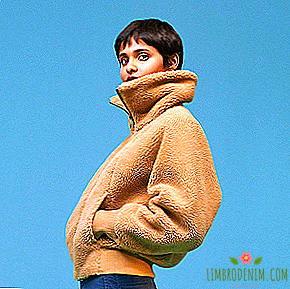To the ends of the earth: Internship and trekking in Chile and Argentina
The desire to go on a long journey matured with me for a long time. At some point, European countries were pretty well studied, I graduated from the institute, I had experience in Russian architectural bureaus, and it seemed to me that this is the best time to go to get professional experience abroad and at the same time “see the world” one friend of mine laughs at me. Latin America has long attracted me with its culture, nature, history and the fact that it has formed the image of a distant and mysterious continent. Thanks to my classmate, I learned about the internship program at the Elejandro Aravena bureau of Elemental, was selected, and I was invited to an internship in Santiago de Chile.
Since I had never been to Santiago and South America before, it was immediately clear to me that this is not a story about moving to the city of my dream, but rather a certain experiment. I really wanted to know how people live in one of the most distant parts of the world from their hometown and how I will feel there alone, without friends and relatives, speaking a foreign language, separated from the world I was used to by the Andes, the Atlantic Ocean and 14 thousand kilometers .

Buenos Aires
The first pressing question was the purchase of a ticket: how economical is it to cross half the world in a crisis? As it turned out, it is much cheaper to buy individual tickets of different airlines from Moscow to Buenos Aires with a transfer in Istanbul and already from Buenos Aires to Santiago. Taking advantage of the situation, I decided to get to know the capital of Argentina better and spend ten days there.
Buenos Aires is a city where European architecture and Latin American temperament meet. The layout of the city, the facades of the houses, the landscape made me think that, after flying for 17 hours, I somehow ended up in Spain. With one reservation: the locals are even more temperamental and, on the one hand, can dance right on the street, and on the other - allow themselves to whistle after the girls.
The center of Buenos Aires attracts with its powerful energy, scale, large number of people and cars. Its main street, July 9th Avenue (by the way, one of the widest streets in the world), looks more like a noisy area of incredible length, and I probably only saw so much neon on Broadway. By the way, Broadway Avenue on July 9 is related not only to neon: it is also filled with events - concert halls, cinemas, music halls actively tout pedestrians with billboard lights. One of the first days, when I unexpectedly found myself at a free classical music concert in front of the opera house, I understood why some people call Buenos Aires the cultural capital of Latin America: here something really happens at any time of the day or night.
The capital of Argentina - a big city with a bustling life, which is felt in scope. Even the vegetation here is striking in scale: the giant acacias found in all the green areas of the city are more like cumulus clouds or airborne ships. The only thing that was unpleasantly surprised was the rubbish on the streets. It is in all districts, although I got the impression that the residents of the capital themselves perceive it simply as part of the city and are not upset about this.
Argentines in general impressed me as an open, noisy, very responsive and passionate nation. Therefore, do not be surprised if a casual acquaintance invites you to his asado home or if an unfamiliar man on the street offers to dance with him to the sound of a street orchestra. This does not mean that you need to be afraid and run away, but you still need to be alert and take precautions. For example, I downloaded a pre-map of the city on my phone and felt calmer in a taxi, as I could track if we were moving in the right direction.

Santiago
Santiago greeted me with the evening freshness and stunning views of the Andes. Unlike the humid weather of Buenos Aires, the climate in Santiago seemed to me much more comfortable: it is very warm during the summer months, but in the evening the heat subsides, and the mountain coolness falls on the city.
Immediately upon arrival, of course, the question of finding an apartment arose. I found several sites with property listings, but unexpectedly Tinder helped me. I decided that in finding housing all the means are good - why not ask new friends if there is anything in mind? It turned out that there is. Literally in two days, I entered the apartment with a wonderful chilean neighbor, her dog Pepino (his nickname is translated into Russian as “Gherkin”) and a gift in the form of Andes outside the window. The Andes, by the way, is one of the symbols of Santiago. The capital of Chile is located in close proximity to the mountains, so the summits are a real participant in the life of the city and its integral part. During these months, I learned that the Andes are bright pink at sunset and bluish at dawn, that they can become snow-white after rain or completely dissolve in haze and smog.
The geographical position is a winning feature of Santiago. Chileans themselves joke that they can go hiking in the mountains in the morning and watch the waves on the ocean shore in the evening. One of my favorite weekend scenarios was the bus ride (by the way, the bus network in Chile is very well developed throughout the country) on the coast to the waves, rocks and pelicans. But Santiago himself can offer a lot of interesting things. With rare exceptions, museums are free here, and there are many free events in the city: street concerts, music festivals, tours. True, crowds of visitors to them can rarely be found. Chileans themselves explain this with a long period of cultural stagnation during the dictatorship, but they look at the situation optimistically: right now the city is beginning to make up for the lost, and to meet a street performance or to visit the avant-garde theatrical production is not difficult.
Santiago is still a city of contrasts. Administratively, it is divided into communes, each of which has its own mayor and budget. The appearance of the commune is very dependent on the well-being of its population, so in one part of the city the streets are paved with neat tiles, there are bike paths and excellent park areas, cafes and modern skyscrapers, while in the other people still huddle in very modest houses and put up with poor street amenities and lack of infrastructure. These factors form a very characteristic feature of Chilean society - class inequality. Not having a position on political and social issues for Chileans is very uncharacteristic. The themes of paid education or a total ban on abortions (which surprised me a lot) really provoke active discussions in society, and, according to my observations, they are absolutely normal to discuss in completely different circles in Santiago and beyond. But, despite the existing problems, the Chileans are very responsive and friendly, ready to help on the street and give advice. They are also distinguished by accuracy and a desire for order: Santiago was pleasantly surprised by the cleanliness of the streets, the quality of the roads and the European level of many services.

National Park Torres del Paine
Chile is very interesting for its nature. The country extends from south to north for more than 6 thousand kilometers and offers the traveler landscapes from deserts and steppes to rocks and glaciers. I dreamed of Torres del Paine: this national park is known to the whole world for untouched nature and stunning views - here you can see lakes, mountain ranges, valleys and forests. But, despite its glory, the reserve remains a place of solitary recreation due to its inaccessibility. Firstly, it is located in the very south of Chile, at a distance of almost 3 thousand kilometers from Santiago; secondly, even from the nearest airport to the reserve you need to get on the crossbar or by car; thirdly, if you do not have a large sum of money, the only option to explore the reserve is trekking, or, in other words, a hike.
Having learned this, I decided that I can only dream about this journey: the complete absence of hiking experience, like-minded people and understanding how everything works, did not give me enough confidence to make this trip alone. But I was unexpectedly lucky. At a party of American friends, I accidentally met a young Chilean who was going on a campaign in Torres del Paine with his girlfriend from Finland. I had the courage and wondered if they needed another companion. Fortunately, the guys were very open, and they had a big tent, so after a couple of days I took time off from work, bought a plane ticket and started planning a trip.
Torres del Paine offers two routes: W, which is recommended for five days, and O, calculated for about nine days. On the territory of the reserve there are two options for overnight stay: the so-called refukhio - small hostels - and camping. Overnight in refukhio is quite expensive, and young people mostly choose campgrounds; We were no exception. Having chosen a shorter route, we began to prepare for it. The fact is that the reserve is famous for its unpredictable weather: one day you can go under the hot sun, then resist the cold wind that is knocked down, and later spend the night in a tent at about six degrees of heat to the sound of rain. Therefore, the issue of equipment is of great importance. It is important to keep in mind that trekking clothing and equipment are quite expensive: if you don’t have them and you don’t have anyone to borrow, you need to get ready to spend an impressive amount. But saving money on clothes and equipment is really not worth it, because throughout the whole journey they are your support and support: every day I thanked modern technologies for the fact that it was not hot in +25 and not cold in the same clothes 12, and in the rain, it is not wet.
The success and joy of the campaign strongly depend on the ammunition, so it is very important to pay attention to at least a few things. Shoes should be exactly trekking, previously raznoshennoy, with thick soles and high tops, so that it is well fixed foot in the mountain areas. The backpack should be roomy, preferably with a large number of compartments and, most importantly, with a convenient weight distribution system, since every day for six to eight hours you will have to bear on yourself at least ten to twelve kilograms. A sleeping bag and a tent should be reliable and suitable for the local climate: with such loads it is very important to sleep at night to recuperate, and this is difficult to do if it is unbearably cold or wet.
It is also very important to think about the right food stocks. Any food, even the most common, such as cereals or apples, in the park is expensive; much cheaper to take food with you. But since any extra gram in a backpack will ultimately respond to pain in different parts of the body, food should be chosen on the basis of nutritional value and light weight. We took with us couscous, pasta, dry tomato sauce, soy meat, mixes of nuts and dried fruit, a couple of chocolates for a rainy day and oatmeal for breakfast. In principle, this is enough to eat a balanced and fairly satisfying, but, of course, the monotony very quickly tires, so after a couple of days, conversations in local "field kitchens" in all world languages were only about burgers.
So, we hit the road. When you arrive in Punta Arenas, the southernmost city of the planet with a population of more than one hundred thousand people, you immediately feel that this is really the end of the earth. I don’t know if this has a scientific explanation or it’s just self-hypnosis, but everything seems completely different - low clouds and a high, soft-pink sky at sunset, almost black sand near the Strait of Magellan, Tierra del Fuego, dissolved in haze on the horizon, and what the serene calm that you feel in everything and in all. Harmony, spaciousness and responsive people - I remember this place as such.
The next day we went to the nearest town to Torres del Paine, Puerto Natales - a transit point on the way to a dream for all trekkers and travelers. Getting from Punta Arenas to Puerto Natales is very simple, there are about five or six bus trips a day. True, during the peak season, tickets are bought up very quickly, so it’s best to purchase them online in advance or get ready to spend another day in Punta Arenas. Puerto Natales is a lovely town, but there is nothing outstanding in it, so we went by bus to the reserve the very next morning. Three hours later, we were dropped off at the entrance to Torres del Paine; there it was necessary to buy an entrance ticket, be sure to register, get a card and, in fact, go on a journey of adventure.
I confess that I was a little scared to take the first steps along the path, since it was my first hike, and I didn’t know what my body could bear and what to expect from the route. The park is arranged very well: the infrastructure is minimal, unobtrusive, and because of this the feeling of virgin nature is not lost. Signs of civilization — souls, toilets, and access to the Internet — are only in campsites, but the most interesting things happen at the transitions between them. For five days we saw mountain gorges and waterfalls, steppes and lakes with water of the most incredible colors - milky-turquoise, thick blue and emerald green - snow-capped peaks and a huge glacier of soft blue color, fields, forests and clouds of all possible shapes and colors and starry sky, what I saw in my life.
In fact, the entire W route is approximately fifty kilometers. It seems that this is difficult? But in reality everything is different. There are practically no flat areas all the way, all day you climb a steep slope, then go down from it. If you add to this that you step mainly on stones, cobblestones or tree roots and you have a heavy backpack behind you, then the task no longer looks so easy. On the day we walked only ten to eleven kilometers, but they stretched for six to seven hours of uninterrupted journey. I can say that I had moments of physical and moral overcoming, when each step gave pain, or when the icy wind actually knocked down, and I was only at the beginning of the distance.
But when, at the next such moment, without a single living soul around us, suddenly a lake opened up with soft turquoise water, stretching among terracotta cliffs, or an incredible glacier surrounded by snow-capped mountain peaks and glowing in the rays of the high Chilean sun, we silently looked at each other, and it became clear that everyone at this moment is happy and does not regret any calluses, nor the pulling back, nor the feeling of hunger. I will not hide, I left Torres del Paine with a feeling of fatigue - but I also felt great gratitude for the opportunity to touch the amazing natural beauty and a little test myself for strength.

World without borders
I still remember that feeling when you are on passport control in Moscow on December 5th, there is snow outside, and you are holding a one-way ticket to Buenos Aires. At this moment, you really want to suddenly turn around, run back to your room, to a warm bed, to your usual life and forget about all this uncertainty ahead and a million dangers that, in the opinion of friends and relatives, are surely waiting for you in Latin America. And now I understand how important it is to give a harsh border guard at this moment to put a stamp in your passport, get on a plane and close my eyes. And then get out of the plane on another continent, at night, breathe in the local air and realize that you are really strong, and the world is big and small at the same time: great in diversity of culture and natural wonders, but at the same time small, because human characters and problems are similar, regardless of the continent and hemisphere. Borders are where we set them, and the feeling of fear of distant countries gave way to new freedom.
After a month my practice comes to an end, and it is still difficult to say how my near future will be, but this experience has certainly already given me a lot. Seeing that even in a country as distant as possible from your home, life is not so very different, I made sure that kilometers are not of great importance, and stereotypes cannot be believed in any way. And if there is a thirst to discover the world for yourself, you need to go out of your comfort zone, and life will surprise you a lot. Even if at some point it seems that you really miss friends and family, you are lonely and your head is torn from a mixture of Spanish, English and Russian, this does not mean that you need to give up. The next day comes, and you are already in love, either you discover the city with a friend you unexpectedly find, or you find harmony alone with yourself.
And here is a very beautiful sky.
Photo: 1 via Flickr, 2, 3, 4 via Shutterstock





